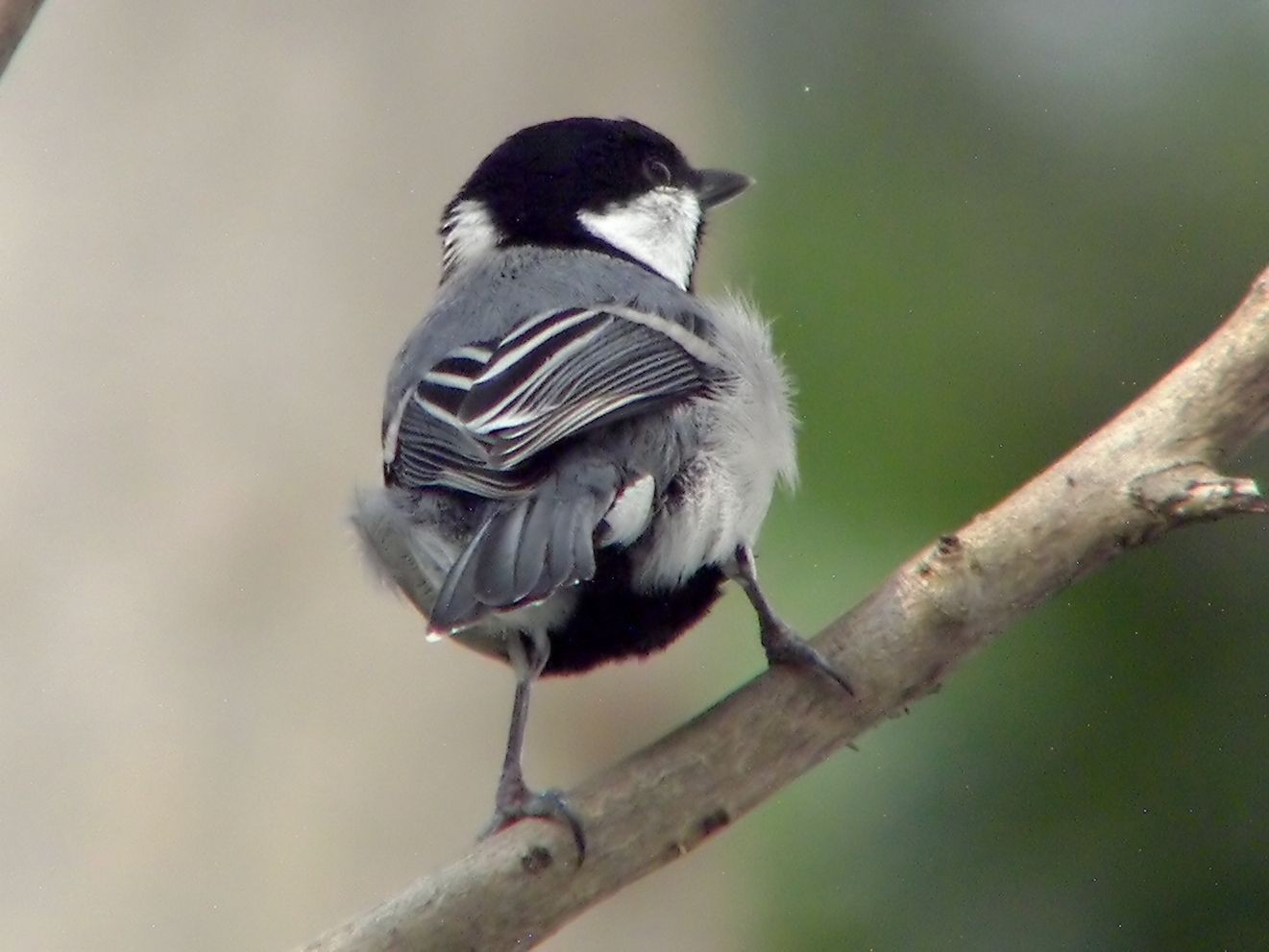Cinereous Tit
A species of Great Tits and Allies Scientific name : Parus cinereus Genus : Great Tits and Allies
Cinereous Tit, A species of Great Tits and Allies
Botanical name: Parus cinereus
Genus: Great Tits and Allies
Content
Description General Info
 Photo By Charles Lam , used under CC-BY-SA-2.0 /Cropped and compressed from original
Photo By Charles Lam , used under CC-BY-SA-2.0 /Cropped and compressed from original Description
Like others in the genus, it has a broad black ventral line and has no crest. This tit is part of a confusing group of species but is distinct in having a grey-back, black hood, white cheek patch and a white wing-bar. The underparts are white with the black central stripe running along the length. The female has a narrower ventral line and is slightly duller. The upper tail coverts are ashy while the tail is black with the central 4 pairs of feathers ashy on the outer webs and all but the central pair are tipped white. The fifth pair is white with a black rachis and a band of black on the inner web. The outermost pair of tail feathers are all white with a black shaft. The undertail coverts are black towards the centre but white on the sides. 
Size
14 cm
Colors
Black
Gray
White
Life Expectancy
15 years
Nest Placement
Cavity
Feeding Habits
Cinereous Tit primarily gleans for insects such as caterpillars, bugs, and beetles while also consuming buds and fruits. Cinereous Tit exhibits adept foraging techniques to disturb and capture prey.
Habitat
Cinereous Tit's habitat spans diverse forest types such as deciduous, mixed, and coniferous, along with riverine thickets and montane regions. This species displays remarkable adaptability, inhabiting various landscapes from urban parks to rural orchards, preferring isolated groves at different altitudes. The geographical range covers the Middle East, Himalayas, and broad Asian and European regions, at elevations from sea level to 4420 meters.
Dite type
Insectivorous
General Info
Feeding Habits
Bird food type
Behavior
These birds are usually seen in pairs or small groups that sometimes join mixed-species foraging flocks. They forage mainly by gleaning, capturing insects (mainly caterpillars, bugs and beetles) that are disturbed and will also feeding on buds and fruits. They sometimes use their feet to hold insects which are then torn with their beak. They may also wedge hard seeds in a bark crevice before hammering them with their beak (noted in ssp. caschmirensis). The calls are a whistling titiweesi...titiweesi... witsi-seesee or other variants repeated three of four times followed by a break. The calling is particularly persistent during the breeding season. In playback experiments, the churring alarm calls of the European Parus major and Asian species are responded to by each other but the songs of the European species do not elicit much response in P. c. mahrattarum. About 4 to 6 eggs form the normal clutch (9 recorded in caschmirensis with one case of two nests side by side). The breeding season is summer and but dates vary across their range. Some birds may raise more than one brood. In southern India and Sri Lanka the breeding season is February to May (mainly before the Monsoons) but nests have also been seen from September to November. The nests are placed in hollows in trees or in a wall or mud-bank with a narrow entrance hole and the floor of the cavity is lined with moss, hair and feathers. They sometimes make use of the old nest of a woodpecker or barbet. Both parents take part in incubation and hissing from within the nest when threatened. They may also roost in cavities such as those in cut bamboo. A species of flea Ceratophyllus gallinae has been recorded in their nests from India. 
Scientific Classification
Phylum
Chordates Class
Birds Order
Perching birds Family
Tits Genus
Great Tits and Allies Species
Cinereous Tit